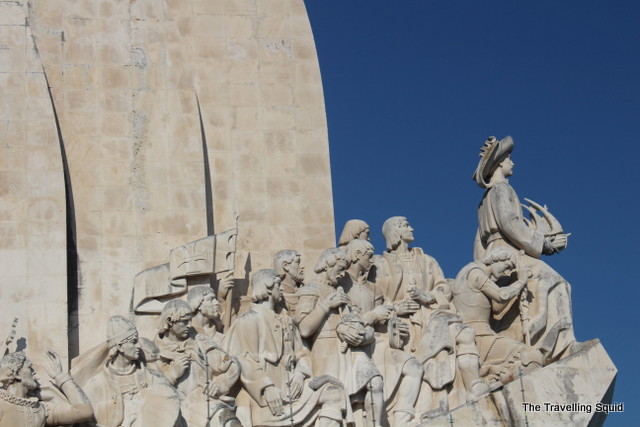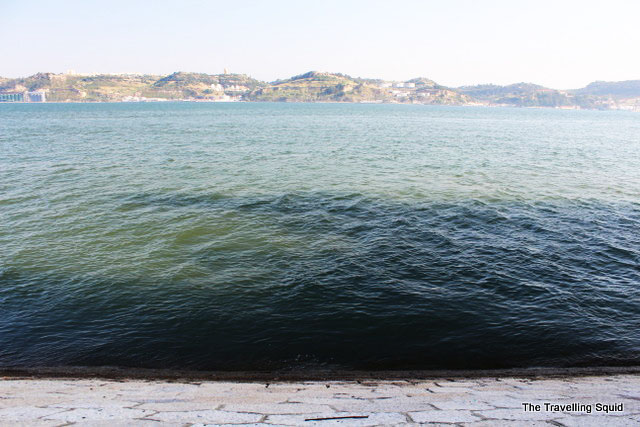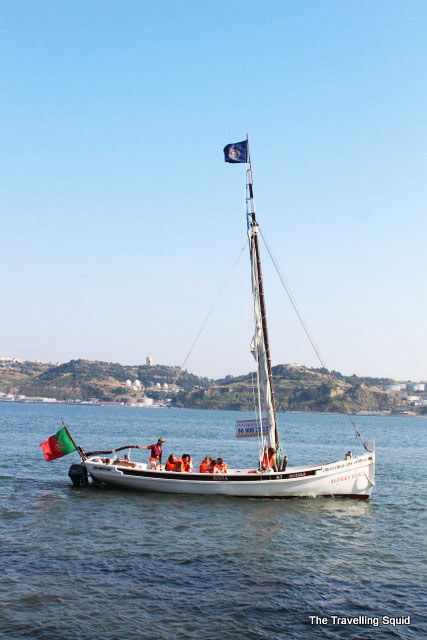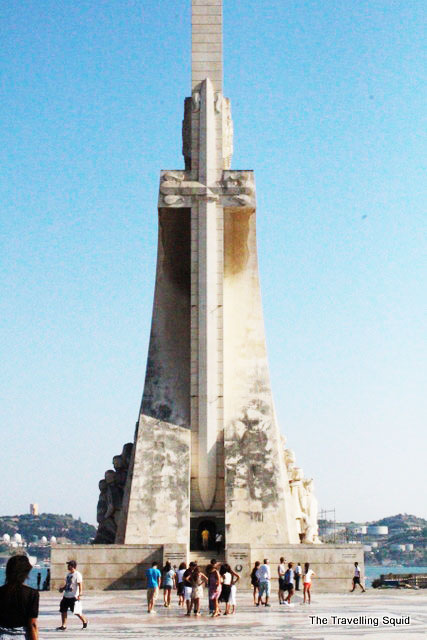Must visit – Padrão dos Descobrimentos in Belem

Padrão dos Descobrimentos is the most intriguing monument I have seen in all of Europe. I am not sure if this is related to my love for travelling, but when I was a kid, I would spend my free time imagining how ‘exploring’ was like that many years ago. The statues on both the east and west side of the ship-like monument were well carved, though patches of black had started to form on their heads and coats, I’m guessing due to wear and tear.
I remembered reading about Portuguese explorers when I was about 11 years old. Our English textbook covered a chapter on Explorers, and the places they had been to. I recalled a name, Vasco de Gama, who was the first European to reach India by sea, and I was so happy to see a statue which commemorates the exploratory age and the contributions of these explorers.

What to do there?
Apart from admiring the skillful sculpturing and intricate details of this monument, take the time to take in the beautiful Tagus River. It is the longest river in the Iberian Peninsular, and empties into the Atlantic Ocean near Lisbon. Check out that occasional yacht that passes by.

* * *

A little bit of History
Source: Wikipedia
Padrão dos Descobrimentos (Monument to the Discoveries) is a monument on the northern bank of the Tagus River estuary, in the civil parish of Santa Maria de Belém, Lisbon. Located along the river where ships departed to explore and trade with India and Orient, the monument celebrates the Portuguese Age of Discovery during the 15th and 16th centuries. The monument was completed on 10 October 1960.
The original structure was erected in steel and cement, while the 33 statues was produced in a composite of plaster and tow. Ostensibly a 52-metre-high slab standing vertically along the bank of the Tagus, the design takes the form of the prow of a caravel (ship used in the early Portuguese exploration).
On either side of the slab are ramps that join at the river’s edge, with the figure of Henry the Navigator on its edge. On either side of the Infante, along the ramp, are 16 figures (33 in total) representing figures from the Portuguese Age of Discovery. These great people of the era included monarchs, explorers, cartographers, artists, scientists and missionaries. Each idealized figure is designed to show movement towards the front (the unknown sea), projecting a direct or indirect reflection of their participation in the events after Henry.
If you like to know the names of each statue and who were those people, the Wikipedia link will come in useful.

Marble maps
The South African government was responsible for constructing the square in front of the monument: the 50-metre-diameter Rosa-dos-Ventos (compass rose) was executed using different types of marble. Designed by the architect Cristino da Silva, it includes a Mappa mundi (medival European map of the world) that is 14 metres wide, showing the routes of Portuguese carracks and caravels during the Age of Discovery.

How to get there?
Padrão dos Descobrimentos is located in Belem and is a 10 min walk from the tram stop. The 52 metre high monument is visible from the stop – simply just walk in its direction.

The Travelling Squid’s Take
Unlike other statues that I have seen, where these patrons and aristocracy were sculpted in their finery and jewels, I felt that the sculptures were done so life-like, determining the emotions that they felt at that time. In particular, I detected signs of confidence, hope and determination in several of the figures, especially that of Henry the Navigator and Vasco de Gamma.

If you look closely, each of the statues were holding something that was related to their role. For instance St Francis Xavier (East wing) was craved as having both of his hands in prayer. while Nuno Gonclaves (West wing) held a palette and brush.

The Travelling Squid’s Take
This is just an observation, but while The Travelling Squid’s view is that the Portuguese haven’t been that great colonial masters, exploration, an activity fraught with danger and risk at that time, is not for the faint hearted. And I really do respect those who had the courage to leave creature comforts at home to explore foreign lands. To me, Padrão dos Descobrimentos is probably, one of the best way of commemorating their efforts.

Leave a Reply